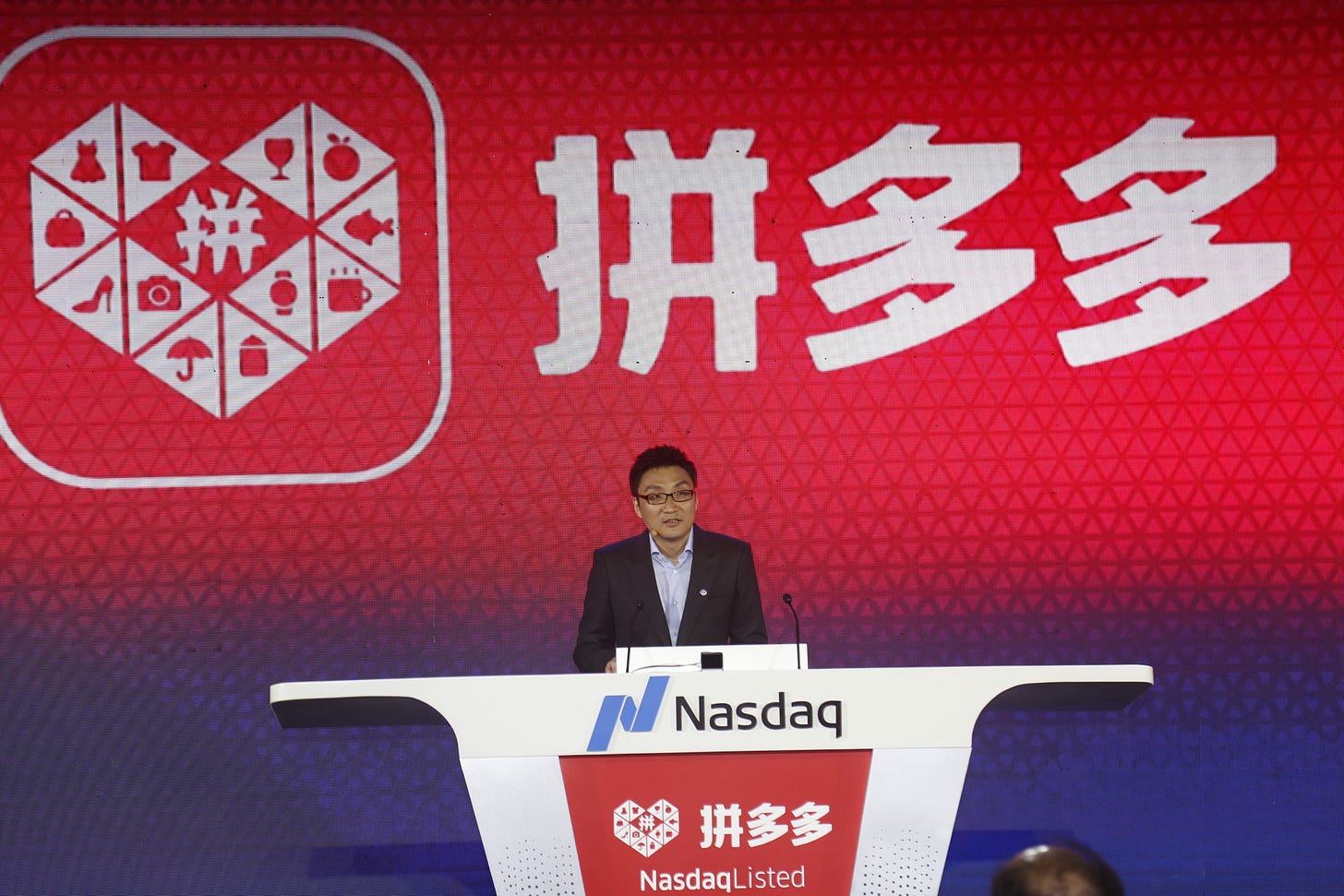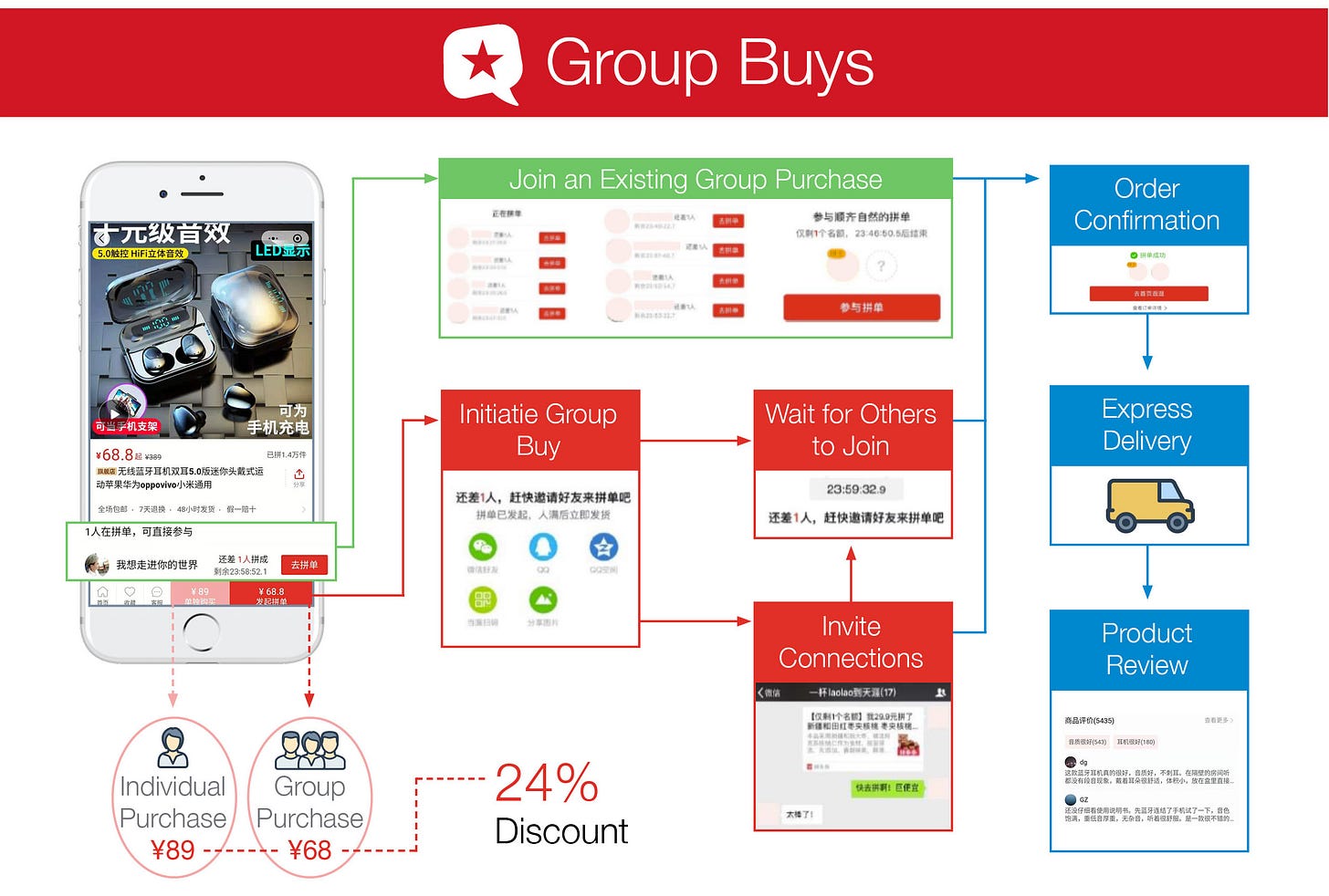What Do You Get When You Combine Disney Land and Costco?
Examining Social Interactive E-Commerce from China
When I was eleven years old, I used to live in Manila, the capital city of the Philippines.
My family lived in an apartment complex next to a shopping mall called Power Plant and that mall became an important point of our lives.
We would go there to eat dinner, to watch movies, to buy groceries and often to just wander around. I would go to Power Plant to attend birthday parties, to play video games in the arcade, to buy books in the bookstore, or just walk around with friends.
Throughout the year, Power Plant would host special events like a Santa Claus meet-and-greet during Christmas or a pop-up exhibition to celebrate the launch of a new fashion brand.
Going to Power Plant was always lot of fun. In 2001, that’s what the typical shopping experience meant to me.

Fast forward to 2020 and that shopping experience has increasingly moved online. I watch most films on my laptop. I purchase most products online. I talk to my friends online. And I rarely go to malls.
While there are many more efficiencies with 2020, the online shopping experience misses some of the most enjoyable aspects of the physical shopping experience. I often miss the serendipity of wandering around a mall and discovering something to buy, stumbling upon a new store, or seeing what films are showing.
Those experiences can reveal a consumer insight. And one company, more than any other in the entire world, understands this really well.
It’s Pinduoduo, the Chinese social commerce company.

In their IPO S-1 Filing, Pinduoduo’s founder Colin Huang described the company’s aspiration to become a mixture of Costco and Disneyland, a combination of great value products and fun entertainment.
Pinduoduo has become of the most impressive Chinese success stories. In five years, they have built an interactive e-commerce platform that taps into social networks, gamification, and entertainment.
The company was founded in 2015 and is now the second largest e-commerce company in China, publicly traded with a market cap of $100 Billion.

Recently, there have been three long English-language pieces providing in-depth analysis on Pinduoduo. If you are interested in the future of e-commerce, it’s 100% worth reading them:
Matthew Brennan, one of the world’s leading China analysts, wrote a whitepaper called “Defining interactive e-commerce: A model as observed through the case of Pinduoduo.”
Turner Novak, general partner at Gelt VC, wrote a substack post “Pinduoduo and Vertically Integrated Social Commerce.”
Acquired, an amazing Tech M&A podcast, devoted an entire episode to Pinduoduo.
There is so much to be said about this company, but I’ll summarise some of the key points:
Reimagining E-Commerce Fundamentals
Most e-commerce up until now has been based on intent.
You know that you are looking for a pair of toothbrush, so you go to a website like Amazon and type in ‘toothbrushes.’ You went to Amazon with the clear intent to buy a specific product, a toothbrush.
But this misses some of the serendipity of real life shopping.
When I would go to the Power Plant mall as a kid, sometimes my purchases were based on impulse or seeing things for the first time. That’s the typical experience for many people who go to shopping malls.
As Matthew Brennan writes, traditional e-commerce “has largely neglected the broader recreational and emotional role that shopping has traditionally played in societies.”
Pinduoduo decided to go after Discovery-based shopping rather than Intent-based shopping.
Intent: “I need to go to the supermarket to buy this specific brand of wine.”
vs.
Discovery: “I’m wandering through the supermarket, see a cool looking bottle of wine and decide to buy it on the spot.”
Pinduoduo is based on making shopping a fun experience of discovery. You have a feed that you scroll through to browse through different products to purchase. Pinduoduo’s Co-Founder and current CEO described it like this:
“We are more like Facebook than Google in the e-commerce world. We push our product recommendation feeds to the consumers rather than wait for them to search on our platform.”

But the way they keep you engaged on the app that’s really interesting…
Gamification and Entertainment
Pinduoduo’s founders used to work in the gaming industry. They built elements of gamification into Pinduoduo - interactive widgets, ways to earn points, a visually engaging design and more.
As an example, there’s the Duo Duo Orchard mini game. This is a game you can play on Pinduoduo where you collect water to grow a virtual fruit tree. If you successfully grow the fruit tree to a certain size, Pinduoduo will ship an actual box of fruit to you.
It’s kind of like getting a free sample at a supermarket. Pinduoduo is translating an online experience (playing a fruit tree mini-game) directly into an offline experience (receiving an actual box of free fruit).

Ok, I know what you’re thinking. While gamification is fun—at the end of the day the biggest thing that influences your decision to buy something is price…
Social Buying
And that’s where Pinduoduo gets really interesting, through incorporating the concept of team buying.
When you see a product you want to buy on Pinduoduo, you’ll be presented with two prices. One price is how much your product will cost if you buy it on your own and the second price is how much your product will cost if you buy it as part of a team.
The ‘team price’ is at discount to the ‘individual price.’ To take advantage of the team price, you can either invite a friend to buy the product or join up with a stranger who is also browsing for the product. The more people who have joined your ‘team purchase,’ the greater the discount.


To me, these are all incredibly genius product decisions based on key insights around consumer psychology.
There are MANY other interesting things about this company (their concept of consumer to manufacturer, leveraging WeChat as a growth channel, targeting lower-tier Chinese cities, livestreaming, etc.), but that’s all I’ll mention today.
If this was interesting to you, check out the much more in-depth analysis from Matthew Brennan’s whitepaper, Turner Novak’s Substack post, and Acquired’s podcast episode.
As people start learning more and more about Pinduoduo, I look forward to seeing if and how these concepts of gamification and entertainment can be implemented in other e-commerce sites, especially those in the West.
I think back to the serendipity and the variety of my experiences as a young kid wandering around Power Plant mall.
Someday, maybe the online shopping experience will be just as rich.




